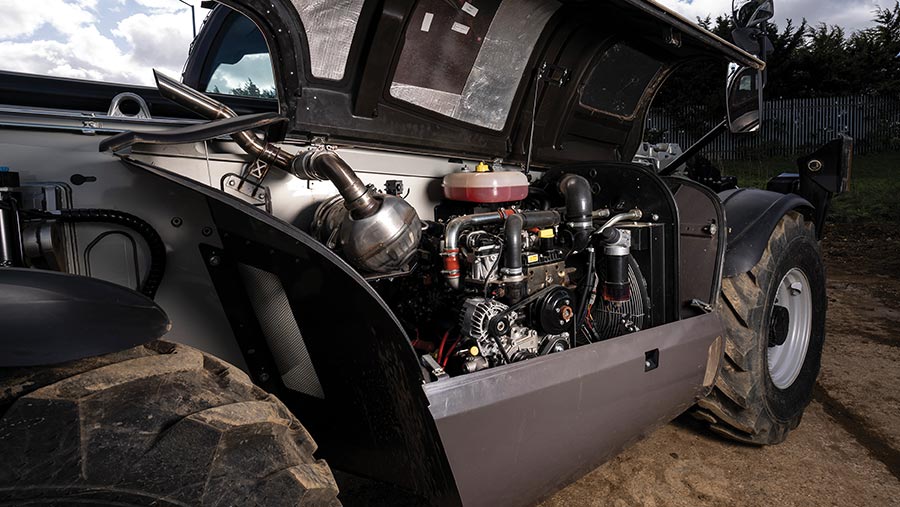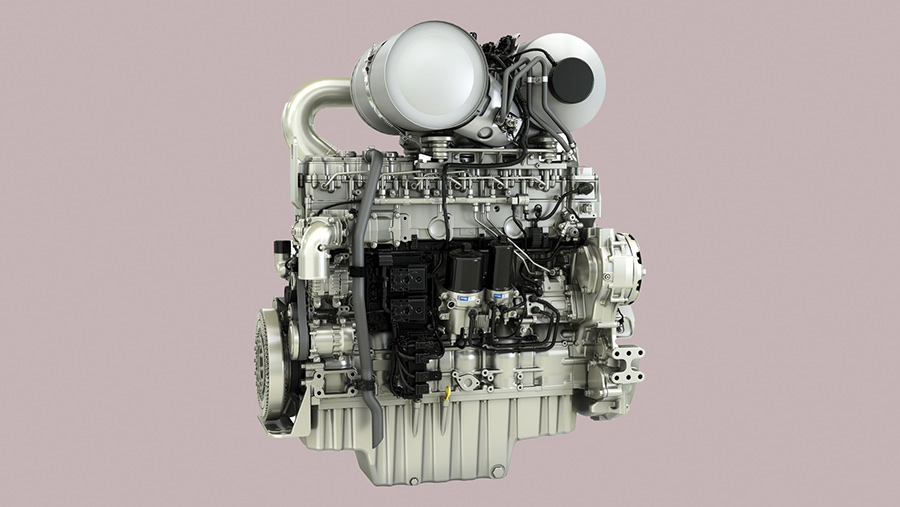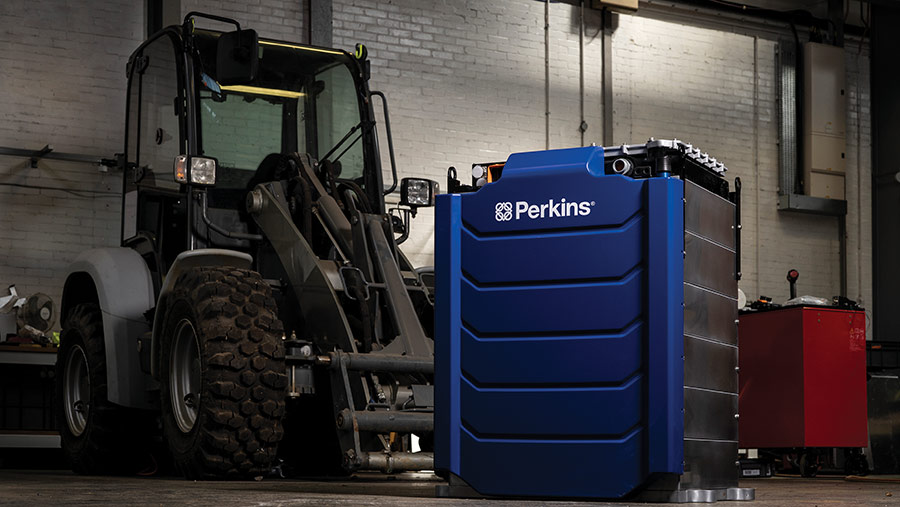Perkins unveils new 690hp, 13-litre straight-six engine
 Hybrid telehandler powertrain © Perkins
Hybrid telehandler powertrain © Perkins Perkins has unveiled a 12.9-litre straight-six engine that is expected to start appearing in farm machinery from 2026.
There are eight variations of the 2600-series, with maximum power ratings ranging from 456hp to 690hp and the biggest serving up its peak torque of 3,200Nm at 1,300rpm.
These engines replace the firm’s 2200-, 2400-, 2500- and single-turbo 2800-series, leaving the twin-turbo 2800 as the sole remnant of the previous generation.
See also: Ag engineers branch out into high-spec custom work

Perkins 2600-series © Perkins
Highlights of the Stage 5 newcomer include a variable-geometry turbocharger, common rail direct injection and a “best in class” power density of 53.5hp/litre.
This has been aided by a 20% reduction in weight versus the existing 15- and 18-litre models, to 1,154kg.
It is also compatible with HVO, B100 distilled biodiesel and B100 fatty acid methyl ester (Fame) biodiesel.
According to Perkins, there’s scope to adapt it for other fuels too, such as spark-ignited natural gas and hydrogen.
Maintenance has been eased with extended service intervals for the oil and fuel systems (now 1,000 hours) and for the diesel particulate filter (5,000 hours).
And more of the pipework has been integrated into the block, almost halving the number of leak joints in the process.
Hydraulic lash adjusters also feature in the new design, as does a revamped rear gear train and stiffer core structure, which together have helped reduce noise by up to 3dB compared with the current 13-, 15- and 18-litre oil-burners.
The company expects the new engines to appeal to manufacturers of tractors, combines, foragers, self-propelled sprayers and wheeled loaders, plus machines in other sectors such as excavators, dozers and aircraft ground support equipment.

Lithium-ion batteries © Perkins
Different power options
Diesel power has been Perkins’ bread and butter since its first Wolf four-cylinder engine was pressed into service in 1933, but the development of hybrid and alternative systems is now well under way.
Unlike JCB, which has backed a single horse in focusing exclusively on hydrogen combustion, Perkins has cast its net widely by developing various power options.
One of the more advanced is a hybrid diesel-electric powertrain currently fitted to a telehandler at the company’s Cambridgeshire headquarters.
It features a 2.8-litre 904-series engine paired with a 20kW electric motor, with a smart clutch allowing the two power units to work individually or in unison for a maximum output of 100hp.
This means the telehandler can run on pure electricity – and thus with zero emissions – for short periods, and there’s a car-like stop-start system to eliminate fuel use when idling.
In practice, the mix of diesel and electric power is said to reduce carbon dioxide emissions by an average of 12% versus a standard internal combustion engine.
Though this technology will inevitably make the powertrain more expensive, it can be partly offset through cheaper running costs, says Perkins.
The company has also completed a seven-year project that culminated in the launch of 48V, 300V and 600V lithium-ion battery packs for use in wheeled loaders and the like.
These can be rigged up in parallel to provide greater power outputs and can also be linked to a DC fast charger to reduce downtime.
Multi-fuel hybrid powertrain
The next project is to develop a core engine structure that would allow the same block to be adapted for different fuel types, such as ethanol, methanol, hydrogen and biomethane.
The aim isn’t to allow machine owners and operators to switch between fuels, but rather to make it easier for smaller manufacturers to develop a tractor or telehandler with an engine that can subsequently be tweaked by Perkins to run on different power sources without requiring major design changes.
In theory, this gives those makers the chance to adapt to customer demands and market forces relatively easily – for example, switching from synthetic diesel, which is likely to get more expensive, to biomethane – without accruing exorbitant redesign costs.
An integrated hybrid element will be able to account for the different power and response losses associated with each fuel type, varying the amount of electrical input to provide performance that, from the driver’s seat at least, will be akin to a diesel.
A demonstration version of the so-called “project Coeus” is slated for completion by 2026.
Hypercare packages
Perkins estimates that more than 4.5m of the 22m engines it has produced are still in work.
To keep these running, it now offers single-box overhaul kits that allow owners to completely revamp their engine and give it a second life.

